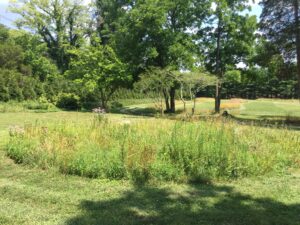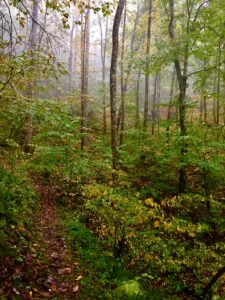Help the Environment – Create Winter Habitat
go.ncsu.edu/readext?835072
en Español / em Português
El inglés es el idioma de control de esta página. En la medida en que haya algún conflicto entre la traducción al inglés y la traducción, el inglés prevalece.
Al hacer clic en el enlace de traducción se activa un servicio de traducción gratuito para convertir la página al español. Al igual que con cualquier traducción por Internet, la conversión no es sensible al contexto y puede que no traduzca el texto en su significado original. NC State Extension no garantiza la exactitud del texto traducido. Por favor, tenga en cuenta que algunas aplicaciones y/o servicios pueden no funcionar como se espera cuando se traducen.
Português
Inglês é o idioma de controle desta página. Na medida que haja algum conflito entre o texto original em Inglês e a tradução, o Inglês prevalece.
Ao clicar no link de tradução, um serviço gratuito de tradução será ativado para converter a página para o Português. Como em qualquer tradução pela internet, a conversão não é sensivel ao contexto e pode não ocorrer a tradução para o significado orginal. O serviço de Extensão da Carolina do Norte (NC State Extension) não garante a exatidão do texto traduzido. Por favor, observe que algumas funções ou serviços podem não funcionar como esperado após a tradução.
English
English is the controlling language of this page. To the extent there is any conflict between the English text and the translation, English controls.
Clicking on the translation link activates a free translation service to convert the page to Spanish. As with any Internet translation, the conversion is not context-sensitive and may not translate the text to its original meaning. NC State Extension does not guarantee the accuracy of the translated text. Please note that some applications and/or services may not function as expected when translated.
Collapse ▲One of the greatest things about living in western North Carolina is our abundant and varied wildlife. If you want to enjoy watching wildlife in your backyard, you can do things that benefit wildlife. Your yard can become winter habitat for creatures both large and small if you do these things:
Keep Your Perennials
DO NOT cut back and clean up frost-killed perennials. Leave these plants as food and habitat for wildlife. Wait to cut them back until after the last frost. Perennial stems and leaves provide overwintering habitat for wildlife such as blue ghost fireflies, moths, butterflies, beetles, salamanders, frogs, birds, insects, turtles and lizards.
Leave the Leaves
Leaves are good! Leaves are nature’s mulch, fertilizer and compost all rolled into one package. Don’t throw away such a valuable resource. Plants mine nutrients from the soil to use in their growth. In nature, these nutrients would be returned to the soil when plant matter such as leaves decomposes in the natural nutrient recycling process. In home gardens, when we harvest vegetables or in the landscape when we remove leaf litter, dead limbs, fallen trees or lawn clippings, we are mining nutrients, too. If we remove soil nutrients and never renew them then we will eventually run out. Instead of burning or bagging up our leaves or grass clippings, or asking our municipalities to expend money and expel exhaust retrieving leaf and limb litter, let us recycle our organic material at home. Use your leaves as mulch in your plantings or compost them and return the organic matter back to the soil.

Start a Meadow
Infrequent mowing of open areas is another management technique that can add habitat for wildlife. Ground nesting birds such as quail, killdeers, and turkeys will use the area for mating, nesting, and feeding. Small mammals such as shrews, moles, and native mice will inhabit the tall grasses and weedy plants. In turn, these animals will attract predators such as hawks and owls that may decide to nest in your forest.
Leave the Forest Edges
 There are other things that entice wildlife. Forest edges, the transition zone between forests and open spaces such as fields, are very important to native animals. This scrubby, thick, overgrown area where plants cram themselves together in competition for light provides hidden ingress and egress routes for larger mammals such as deer, opossum, raccoons, and squirrels. It provides cover for ground nesting and tree nesting birds as well as an in-between resting place for birds that reside in the treetops but feed on open ground.
There are other things that entice wildlife. Forest edges, the transition zone between forests and open spaces such as fields, are very important to native animals. This scrubby, thick, overgrown area where plants cram themselves together in competition for light provides hidden ingress and egress routes for larger mammals such as deer, opossum, raccoons, and squirrels. It provides cover for ground nesting and tree nesting birds as well as an in-between resting place for birds that reside in the treetops but feed on open ground.
Leave Dead Trees if Possible
 Dead trees are very important to many species of birds and mammals, but especially so to woodpeckers. These trees can be left to decompose naturally if they do not pose a risk to property. Dead or fallen trees and stumps should be left on the forest floor to provide food and shelter for fungi, beetles, centipedes, and other small creatures that make up the lower end of the food chain.
Dead trees are very important to many species of birds and mammals, but especially so to woodpeckers. These trees can be left to decompose naturally if they do not pose a risk to property. Dead or fallen trees and stumps should be left on the forest floor to provide food and shelter for fungi, beetles, centipedes, and other small creatures that make up the lower end of the food chain.
Everyone Needs Water
Another attractant for wildlife is water. Having a stream or pond attracts wildlife that uses the water for drinking, bathing, and food. Ducks, beaver, otter, fish, amphibians (toads, frogs, and turtles), and many important insects, such as dragonflies, inhabit these aqueous environments. Protecting water is important. Reducing the use of chemicals is one of the best ways to reduce our impact on creeks and streams. Use less home pest control products such as insecticide, herbicide, and fungicide by using Integrated Pest Management.





